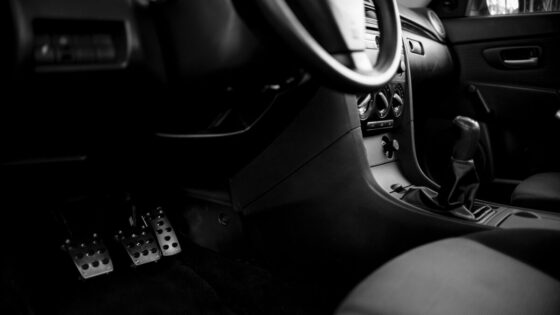Let’s Talk about ADAS and Safety Features for Cars in the US: What You Need to Know

When it comes to car safety, technology has come a long way over the past few decades. Advanced Driver Assistance Systems (ADAS) are designed to help drivers stay safe on the road and reduce the risk of accidents. In this article, we will explore the different ADAS features available in cars in the US, how they work, their limitations, and the benefits of using them. We will also look at the regulations and standards governing ADAS and safety features in the US and the future of vehicle safety.
ADAS Features
ADAS features are designed to help drivers avoid accidents and stay safe on the road. They use sensors and cameras to monitor the environment around the car and provide feedback to the driver. Here are some of the most common ADAS features found in modern cars:
- Lane Departure Warning and Lane Keep Assist: These features help drivers stay in their lane and avoid unintentional lane departures. Lane Departure Warning alerts the driver when the car starts to drift out of the lane, while Lane Keep Assist uses corrective steering to keep the car centered in the lane.
- Automatic Emergency Braking: This feature automatically applies the brakes to prevent a collision if the car detects an imminent crash.
- Adaptive Cruise Control: This feature maintains a safe distance between the car and the vehicle in front of it, adjusting the speed of the car accordingly.
- Blind Spot Detection: This feature alerts the driver when there is a vehicle in their blind spot, reducing the risk of a collision when changing lanes.
- Rearview Camera: This camera provides a clear view of what’s behind the car, making it easier for drivers to reverse safely.
- Airbags: These are designed to protect occupants in the event of a crash by cushioning the impact of a collision.
- Anti-lock Braking System (ABS): This feature prevents the wheels from locking up during hard braking, improving control and reducing the risk of a collision.
- Electronic Stability Control (ESC): This feature helps prevent skidding and loss of control by applying individual brakes and reducing engine power as needed.
- Traction Control System (TCS): This feature helps prevent wheel slip during acceleration, improving control and reducing the risk of a collision.
- Tire Pressure Monitoring System (TPMS): This feature alerts the driver when tire pressure is low, reducing the risk of a blowout and improving fuel efficiency.
Benefits of Using Safety Features
- Reduce the risk of accidents, injuries, and fatalities on the road
- Automatic emergency braking can prevent 28% of rear-end collisions and reduce the severity of others
- ADAS features can make driving easier and more comfortable
- Adaptive Cruise Control can reduce driver fatigue on long trips
- Maintains a safe distance from the vehicle in front of it.
How ADAS Features Work and Their Limitations
ADAS features are a relatively new technology that uses advanced sensors and cameras to monitor the environment around the car and provide feedback to the driver. These features can alert drivers to potential hazards, assist with parking, and help avoid collisions. However, like all technologies, ADAS features have their limitations.
For example, Lane Departure Warning (LDW) may not work properly if the lane markings are faded or obscured. This means that drivers may receive false alerts, or worse, not receive an alert when they need it most. Similarly, Blind Spot Detection (BSD) may not detect motorcycles or bicycles, as they are smaller and harder to detect than other vehicles.
It’s also important to remember that ADAS features are designed to assist the driver, not replace them. While these features can make driving easier and safer, they are not foolproof. Drivers must remain alert and attentive at all times and be prepared to take control of the vehicle if necessary. It’s also essential to understand the limitations of these features and to use them as intended.
For example, drivers should not rely solely on LDW or BSD to avoid collisions. Instead, they should always check their blind spots and use turn signals before changing lanes. Similarly, Adaptive Cruise Control (ACC) can reduce driver fatigue on long trips by maintaining a safe distance from the vehicle in front of it. However, drivers must still be prepared to brake if necessary, as ACC may not detect sudden stops or obstacles in the road.
Overall, ADAS features can be a valuable tool for drivers, but they are not a replacement for safe driving practices. Drivers must remain vigilant and alert at all times and be prepared to take control of the vehicle if necessary. By understanding the limitations of ADAS features and using them as intended, drivers can enjoy the benefits of this technology while staying safe on the road.
ADAS Features in US Cars
Advanced Driver Assistance Systems (ADAS) are becoming increasingly popular in modern cars, and for good reason. These features provide drivers with assistance and support, making it easier and safer to operate their vehicle. Some of the most common ADAS features found in cars in the US include Adaptive Cruise Control (ACC), Lane Departure Warning (LDW), Blind Spot Detection, and Rearview Camera. In this section, we will focus on ACC and LDW.
Adaptive Cruise Control (ACC)
ACC is a technology that uses radar sensors to detect the distance between your vehicle and the vehicle in front of you. Once it detects the distance, it automatically adjusts your vehicle’s speed to match the speed of the vehicle in front of you. The system maintains a safe distance between the two vehicles and will apply the brakes if the distance becomes too small.
Benefits of using ACC
- ACC reduces the need for constant speed adjustment, making it easier for the driver to maintain a safe following distance.
- It helps reduce driver fatigue on long trips by taking over the task of maintaining a safe distance from the vehicle in front of it.
- ACC can improve fuel efficiency by avoiding sudden acceleration and braking, which wastes fuel.
- It also enhances safety by reducing the risk of rear-end collisions caused by sudden braking or deceleration.
Lane Departure Warning (LDW)
- LDW (Lane Departure Warning) can help reduce the risk of accidents caused by drifting out of a lane, especially when a driver is inattentive or drowsy.
- LDW can improve driver confidence while driving on unfamiliar roads, where the lane markings may not be as clear or visible.
- The system provides an audible and visual warning to alert the driver when the vehicle starts to drift out of its lane, allowing them to take corrective action to avoid a potential collision.
- LDW can be particularly helpful for drivers with medical conditions that can affect their driving abilities, such as sleep apnea, narcolepsy, or seizures.
- Studies have shown that LDW can reduce lane departure accidents by up to 30%, making it a valuable safety feature for all drivers.
Examples of cars with LDW available in the US:
LDW is available in many vehicles in the US, including the Chevrolet Malibu, Kia Optima, Subaru Legacy, and many others.
Safety Features in US Cars
In addition to ADAS features, many cars in the US also come equipped with various safety features that help prevent accidents or reduce their severity. Here are two key safety features to look out for:
A. Forward Collision Warning (FCW)
Forward Collision Warning (FCW) is a safety feature that alerts the driver when the car is at risk of colliding with another vehicle, object, or pedestrian in front of it. FCW systems use cameras, radar, or other sensors to monitor the distance and speed of the vehicle ahead and determine whether a collision is likely to occur.
If the FCW system detects an imminent collision, it will alert the driver with an audible and visual warning, such as flashing lights or a vibrating steering wheel. The driver can then take action to avoid the collision, such as braking or steering away from the obstacle.
Benefits of using FCW:
- Helps prevent rear-end collisions, which are one of the most common types of accidents on the road.
- Alerts the driver to a potential collision, giving them more time to react and avoid an accident.
- Reduces the severity of a collision if one does occur by warning the driver and giving them time to slow down.
- Can help improve overall safety on the road.
Examples of cars with FCW available in the US:
- Honda Civic
- Toyota Camry
- Ford Escape
- Subaru Outback
- Hyundai Elantra
- Mazda CX-5
- Nissan Altima
- Kia Sportage
- Volkswagen Jetta
- Chevrolet Equinox
B. Automatic Emergency Braking (AEB)
Automatic Emergency Braking (AEB) is a safety feature that can automatically apply the brakes when a collision is imminent and the driver does not respond to FCW alerts. AEB systems use sensors similar to those used in FCW to detect the risk of a collision and apply the brakes if necessary.
Benefits of using AEB:
- AEB can prevent or reduce the severity of accidents by applying brakes when the driver fails to respond to FCW alerts.
- AEB can prevent accidents in situations where the driver is distracted or unable to react in time.
- AEB can reduce the risk of pedestrian accidents by automatically stopping the car when a pedestrian suddenly enters the road.
Examples of cars with AEB available in the US:
- Subaru Outback
- Nissan Rogue
- Tesla Model 3
- Honda Accord
- Toyota Corolla
- Kia Optima
- Hyundai Sonata
- Mazda CX-5
- Audi Q7
- BMW 5 Series
Regulations and Standards
The US government sets regulations and standards to ensure that ADAS and safety features in cars are effective and reliable. The National Highway Traffic Safety Administration (NHTSA) is the primary agency responsible for setting and enforcing these standards.
NHTSA regulations cover a wide range of safety features, including airbags, seat belts, and electronic stability control (ESC). In recent years, the agency has also begun to develop regulations for ADAS features such as FCW and AEB.
Challenges and debates around regulating ADAS and safety features
One challenge with regulating ADAS and safety features is balancing the need for safety with the need for innovation and cost-effectiveness. Some automakers argue that excessive regulation could stifle innovation and make cars more expensive.
Another challenge is ensuring that ADAS and safety features are effective in real-world driving conditions. Some critics have raised concerns that some ADAS features may not work as well in certain driving situations or may even create new safety risks if drivers become over-reliant on them.
Future of ADAS and Safety Features
As technology continues to advance, so do the safety features in cars. Here are some trends and innovations in ADAS and safety features that are shaping the future of vehicle safety:
- Augmented Reality Head-Up Displays (AR HUDs): These displays will project important information, such as speed, navigation, and ADAS alerts, onto the windshield in the driver’s line of sight. This will allow drivers to stay informed without having to take their eyes off the road.
- Advanced Driver Assistance Systems (ADAS): ADAS is becoming more advanced, with systems that can detect and avoid pedestrians, cyclists, and other vehicles on the road. This technology will help reduce accidents caused by driver error.
- Biometric Identification: Some car manufacturers are exploring biometric identification technology, such as facial recognition, to ensure that only authorized drivers are behind the wheel. This could help prevent theft and unauthorized use of vehicles.
- Cybersecurity: As cars become more connected and rely more on technology, cybersecurity becomes increasingly important. Manufacturers are working on improving the security of vehicle systems and protecting them from cyber threats.
- Predictions for the future of vehicle safety in the US include a continued focus on ADAS and safety features, as well as the development of autonomous vehicles. As self-driving cars become more common, the need for traditional safety features may decrease, but the importance of cybersecurity will only grow.
FAQ
In many cases, yes. Some ADAS features, such as blind spot detection and backup cameras, can be added to older cars through aftermarket products. However, not all features can be added, and it’s important to consult with a professional to ensure that any added features are installed correctly and don’t interfere with other systems in the car.
No, not all safety features are required by law. However, certain features, such as airbags and seat belts, are mandated by the government. The National Highway Traffic Safety Administration (NHTSA) sets safety standards for new vehicles, and manufacturers must meet these standards in order to sell their cars in the US.
No, ADAS features should be used as a supplement to safe driving practices, not a replacement. Drivers should always remain focused on the road, avoid distractions, and follow traffic laws. ADAS features are meant to assist drivers, but they cannot prevent all accidents caused by driver error.
No, ADAS features vary by car model and manufacturer. Some manufacturers may offer more advanced features than others, or certain features may only be available on higher-end models. It’s important to research and compare different cars and their safety features before making a purchase.



